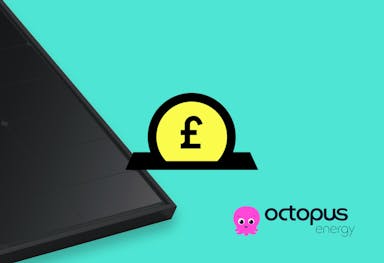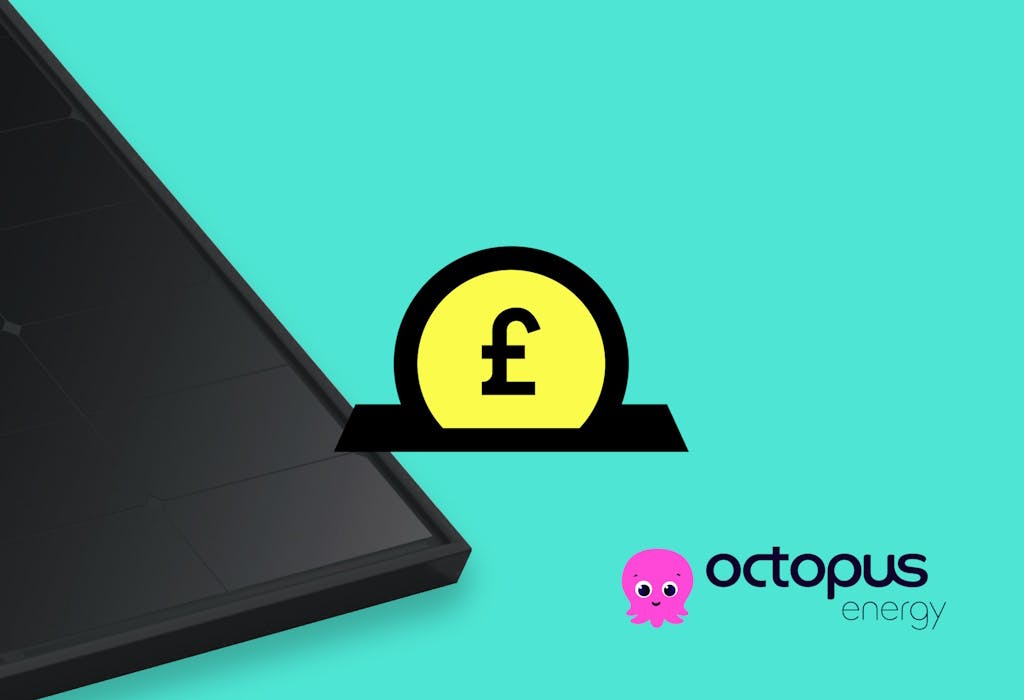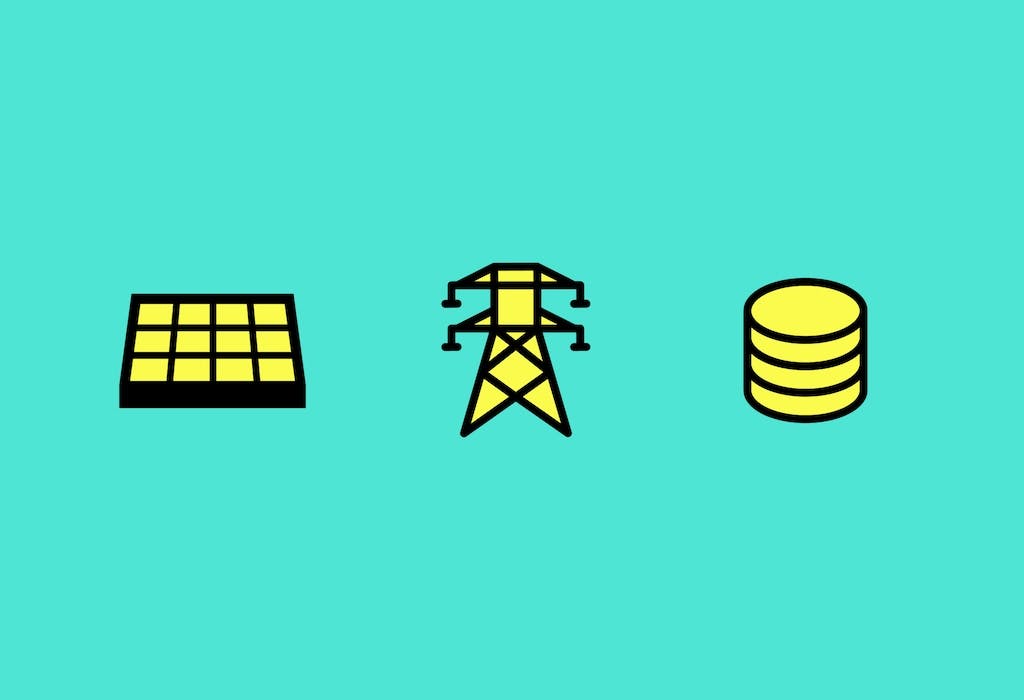- Solar advice hub
- Exporting-to-the-grid
- Agile Octopus: is it worth it?
Agile Octopus: is it worth it?
Here's how Agile Octopus works, how it could benefit you, and whether it would be a good idea for your home.


Why you can trust our content
We know that the solar industry is full of misinformation, but we only use reliable sources, including:
- Our experienced solar experts, installers and system designers
- Our own database of solar & battery system designs
- Authoritative bodies like MCS and the UK government




Calculate savings
What kind of home do you live in?
Calculate savings
What kind of home do you live in?
Agile Octopus: at a glance
You’ve heard of peak and off-peak periods, and you’ve experienced rates climbing when demand spikes, but Agile Octopus takes this concept to a whole new level.
This electricity tariff changes its price every 30 minutes, allowing customers – who know about these rates in advance – to cut their electricity bills by shifting their usage to cheaper times.
In this guide, we’ll explain how Agile Octopus works, how it benefits both customers and Octopus, and whether it could be a good idea for your household.
If you're thinking about switching to Agile Octopus in order to cut your energy bills, you should also consider going solar.
To find out how much a solar & battery system could save you, enter a few details below and we’ll provide an estimate.
Find out how much you can save
What kind of home do you live in?
What is Agile Octopus?
Agile Octopus is a smart electricity import tariff that adjusts its rate every 30 minutes, in line with wholesale price changes.
So rather than setting fixed peak and off-peak rates, this tariff reflects the continually shifting nature of the electricity market.
This comes with more risk than normal variable tariffs, which typically change every few weeks at most.
Thankfully, Agile Octopus comes with a price cap of £1 per kWh (kilowatt-hour), to ensure that even if the wholesale rate rises horrendously high, the impact on your bills will be limited. This cap has been hit, though not often.
You can also switch tariffs at any time, with no exit fee – so if the energy market explodes, there’s nothing stopping you from going back to a tariff set at Ofgem’s current price cap.
As it’s only an import rate, any solar panel owners will need to choose an export tariff to maximise their profits from selling excess electricity to the grid.
Your best option would either be Outgoing Octopus tariff, which pays 15p per kWh, or Outgoing Agile, which offers a variable rate.
To sign up for Agile Octopus, click the button below.
Agile Octopus: the key details
Here are all the most important details you need to know before committing to Agile Octopus.
If you sign up and regret it, Octopus allows you to leave without any fuss. The only downside being that you won't be able to rejoin Agile Octopus for 30 days.
| Details | |
|---|---|
| Provider | Octopus Energy |
| Tariff name | Agile Octopus |
| Tariff type | Variable |
| Tariff change frequency | Every 30 minutes |
| Price cap | £1/kWh |
| Average savings vs normal tariff | £440 per household in 2023 |
| Requirements | You must have a smart meter |
| Exit fee? | No |
How does Agile Octopus work?
For customers, Agile Octopus is relatively simple. Every day between 4pm and 10pm – but usually closer to 4pm – Octopus releases tomorrow’s electricity rates in half-hour periods, so households can save money by planning their consumption around the peaks and troughs.
For instance, Agile customers in London knew on 26 June 2024 that on the 27th, they would be charged a high rate of 29.28p per kWh for any electricity they used from 6:30pm to 7pm – but they could avoid that fate by shifting their consumption to other times.
If they were deciding when to cook dinner, they might wait until 7-7:30pm, when the rate fell to 18.34p per kWh – or if they were working out when to put the laundry on, they may choose the 3-3:30pm period, when it cost them just 1.69p per kWh.
Prices can even dip into negative numbers, with customers getting paid to use electricity during these periods, which Octopus calls plunge pricing. More on that later on.
The nuts and bolts
If you’re wondering how the sausage gets made, it relies on a formula that converts the national half-hourly wholesale rate into a price that Octopus charges customers.
This formula multiplies the wholesale rate by the cost of distributing electricity to the public, which is between 2p and 2.4p, depending on where you are in the country.
Between 4pm and 7pm each day, Octopus adds a peak-time premium, which ranges from 11p to 14p. Like all peak rates, this is designed to discourage customers from buying electricity when it’s most expensive for Octopus.
So at any given time, you’ll pay roughly double the wholesale rate, with an extra charge during peak hours – and if necessary, the rate is then capped at £1 per kWh.
If the wholesale price is, say, 7p per kWh for a certain half-hour, customers in south Scotland will pay 14.7p per kWh, or 27.7p per kWh during a peak time.
During the first six months of 2024, the average weekly wholesale price varied from 6p to 9p per kWh, according to Ofgem – but on a half-hourly basis, the rate jumps and falls much more dramatically.
The electricity prices we mentioned in our example above from June 2024 sprung from wholesale costs that ranged from 0.85p to 8.64p per kWh.

Why did Octopus set up Agile Octopus?
Octopus created Agile Octopus to save money and fight climate change.
Every day, electricity suppliers pay generators a much higher rate during the 4-7pm peak – so by encouraging customers to shift their electricity usage away from this period, Octopus cuts its expenses.
Octopus passes on some of these savings to customers, incentivising them to move more of their electricity consumption and reduce the grid’s expensive peaks. Everyone wins – except perhaps the generators.
Agile is also part of Octopus’s stated mission to reach net zero by 2040.
A higher proportion of the electricity used in peak hours is powered by fossil fuels, so pushing customers to shift their consumption to other, greener times helps to cut household carbon emissions.
What rates does Agile Octopus charge?
Agile Octopus charges a different rate every 30 minutes, ranging from negative pricing that pays you to use electricity, all the way up to its cap of £1 per kWh.
Over the 12 months between July 2023 and June 2024, customers typically paid the following amounts at different times:
Considering the average cost of electricity over the 12-month period between July 2023 and June 2024 was 29p per kWh, the lower rates offered by Agile at most hours of the day can be extremely profitable for customers.
Rates do spike every so often, though. In the east Midlands for instance, the past year has seen the price of electricity go above 50p per kWh on 11 different days – though it’s also dipped below zero dozens of times.
How much can you earn with Agile Octopus?
You can earn hundreds of pounds per year with Agile Octopus.
The average Agile customer saved £440 in 2023, compared to a standard tariff, according to Octopus.
How much you save will depend on both your actions and the way the UK produces and consumes electricity, as the tariff’s rates are largely based on supply and demand.
Your opportunities to save money on Agile will increase every time renewable electricity generators experience spikes in production, and every time the UK’s electricity consumption rises suddenly – but you’ll still need to take advantage.
If you respond quickly and flexibly in order to shift as much of your usage as possible to cheaper time periods, you can dramatically lower your electricity bills.
What is plunge pricing?
Plunge pricing describes periods in which the cost of electricity on Agile Octopus drops below zero, meaning you receive money for every kWh of electricity you use.
Octopus will send you an alert the day before, allowing you to shift as much electricity consumption as possible to a plunge pricing time.
This is possible because there are times when renewable generators like solar and wind farms produce more electricity than the country is consuming.
In these moments, the grid has more electricity than it can store, so it pays suppliers to use the excess – and Octopus passes these savings on to customers, encouraging them to help out by paying them for every kWh they use.
In the 12 months from July 2023 to June 2024, there were 284 half-hour periods in which customers could take advantage of what Octopus calls ‘plunge pricing.’
That means for 1.6% of the time, Octopus paid Agile households for using electricity.
Plunge pricing is less common in the winter months, since demand for electricity tends to increase significantly as people stay in more and can rely less on natural light, while supply levels stay roughly the same.
In the 12 months from October 2023 to September 2024, demand for electricity was 17% higher in the winter than the annual average, according to our analysis of data provided by National Energy System Operator.
Demand in winter was also 25% higher than it was the summer, which is when you'll usually enjoy the most plunge pricing periods.
Find out how much you can save
What kind of home do you live in?
Combining Agile Octopus with a solar export tariff
If you have solar panels, you should sign up for an export tariff alongside Agile Octopus, so you can sell your excess electricity to the grid.
And given you'll be an Octopus customer, your best choice will be one of Octopus's export tariffs.
The best choice for most households is either to get Outgoing Octopus, which earns you 15p per kWh, or Outgoing Agile, which come with a variable rate.
The fixed rate nets the average household with a 4.3kWp solar panel system £216 per year.
You should also think about switching your import and export tariff to Intelligent Octopus Flux, especially if you have very low self-consumption and send most of your solar panels' electricity to the grid.
This smart tariff charges higher rates during the 4pm-7pm peak time than at any other point, but the import and export rates always stay level with each other. Octopus also controls your battery, using it as a selling machine that maximises your profits.
The main downside is that you won't get the cheap import rates that Agile Octopus frequently offers.
Your calculations may also change depending on which pieces of green technology you're powering. If you have an electric vehicle, for example, you may want to use Intelligent Octopus Go as your import tariff, instead of Agile Octopus.
This product – which is one of the best EV tariffs around – enables you to charge your EV for 7p per kWh, at any time of day, and use the same rate to power your household’s appliances between 11:30pm and 5:30am.
You can also use Outgoing Octopus or Outgoing Agile with this tariff.
On the other hand, if you own a heat pump, you may want to use Cosy Octopus as your import tariff.
Cosy Octopus offers an off-peak rate three times per day – from 4am to 7am, 1pm to 4pm, and 10pm to 12am – that’s around 50% cheaper than your region’s Flexible Octopus rate.
How can you sign up for Agile Octopus?
To sign up for Agile Octopus, you’ll need to be an Octopus customer.
If you’re not currently with Octopus, the company will put you on its standard flexible tariff before switching you to Agile after it’s connected to your smart meter.
Once your smart meter’s up and running, you’ll receive an email asking you to accept the terms and conditions.
If you already get your electricity from Octopus, this email usually takes just a few hours to arrive.
After you agree to Octopus’s terms and hit submit, the switch should happen more or less straight away.
Between 4pm and 10pm, you’ll be able to access your next day’s electricity rates, and from that point on, it’s all on you.
To sign up for Agile Octopus, click the button below.
Eligibility requirements
Octopus can only switch you to Agile from one of its own tariffs, so you’ll need to become an Octopus customer on one of its standard tariffs first, before they can switch you.
You’ll also need to have a smart meter installed, as Agile only works because it can see how much electricity you use in each half-hour period.
If you don’t have a smart meter, your energy supplier is legally obliged to install one for free if you request it – and Octopus is no different.
How long does it take?
If you’re not already with Octopus, it’ll usually take around two weeks to switch you over from another supplier.
As soon as you’re on one of Octopus’s tariffs though, the process is rapid.
You’ll get an email with the terms and conditions within a few hours – and often within an hour – and once you’ve given your consent, your home will move to Agile in next to no time.
All in all, Octopus customers with a smart meter can change to Agile with barely any effort, in barely any time.
Is it worth switching to Agile Octopus?
It's worth switching to Agile Octopus if your household breaks the mould by not increasing its electricity usage dramatically during peak hours – or if you're willing to start doing so.
If you’re happy to avoid peaks where possible and change your electricity-related plans based on prices you get the day before, you can profit from the switch.
The more electricity your household uses, the more you’ll be able to save by shifting your usage, which makes this an excellent choice for homes with storage heaters or a heat pump.
However, if you have solar panels or an electric car and charger, you may want to look elsewhere.
Solar panel owners will almost certainly benefit most from using Intelligent Octopus Flux, a smart import and export tariff that enables Octopus to buy and sell grid electricity on your behalf to achieve the highest returns.
And if you have an EV, Intelligent Octopus Go may well be the best option. This smart tariff allows you to charge your car for 7p per kWh at any time, and use the same rate to power your home between 11:30pm and 5:30am.
Summary
Agile Octopus is a groundbreaking tariff that offers households the chance to save hundreds of pounds on electricity per year if they can be flexible in their consumption.
As it’s not a smart tariff, the responsibility falls on you to check the next day’s rates and shift your usage accordingly.
But even if you don’t have the time every day to plan when you will and won’t use your washing machine and games console, you can still cut your bills by avoiding the 4-7pm peak period.
The best, quickest way to reduce your electricity bills is to go solar. If you’re wondering how much you could save with a solar & battery system, enter a few details below and we’ll provide an estimate.
Find out how much you can save
What kind of home do you live in?
Agile Octopus: FAQs
Related articles

Written byJosh Jackman
Josh has written about the rapid rise of home solar for the past six years. His data-driven work has been featured in United Nations and World Health Organisation documents, as well as publications including The Eco Experts, Financial Times, The Independent, The Telegraph, The Times, and The Sun. Josh has also been interviewed as a renewables expert on BBC One’s Rip-Off Britain, ITV1’s Tonight show, and BBC Radio 4 and 5.






